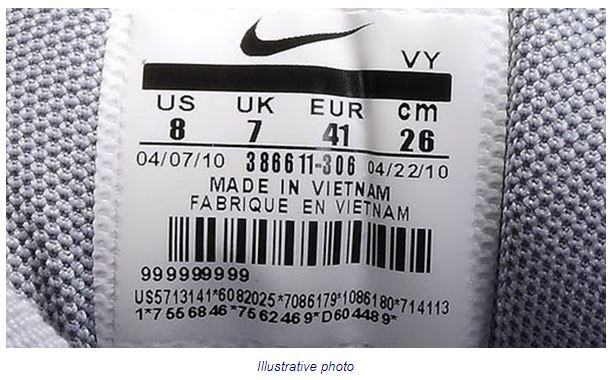Ministry to release “made in Vietnam” criteria
The Hanoitimes – The move aims to systematize the standards and conditions for a product to be labeled as “Made in Vietnam” or of Vietnamese origin.
Vietnam’s Ministry of Industry and Trade (MoIT) is gathering feedback for the first draft of criteria for products to be certified as made-in-Vietnam, VnExpress quoted Deputy Ministry of MoIT Tran Quoc Khanh as saying.
The move aims to systematize the standards and conditions for a product to be labeled as “Made in Vietnam” or of Vietnamese origin.
According to the Export-Import Department under the MoII, there are foreign products mislabeled as “Made in Vietnam” to deceive customers.
The current legal framework does not fully regulate the criteria on the country of origin of a product. As a result, the concept of “Vietnamese product” is vague and foreign or local businesses have taken advantage of it to declare their products as “Made in Vietnam” to enjoy preferential tariffs under the free trade agreements to which Vietnam is a signatory.
“The elaboration of the criteria will be carried out cautiously and the MoIT will carefully learn the opinions of everyone, assess multi-dimensional impacts to reach consensus before submitting the draft set of criteria to a higher level,” Khanh said.
Under Vietnam’s regulation, it is up to the manufacturers to label their product as “Made in Vietnam” as they wish, provided that they are honest.
Many enterprises have taken advantages of this loophole to self-proclaim its products as “Made in Vietnam” such as the Khaisilk, a premier Vietnamese silk brand, found mislabeling its scarves imported from China as “Made in Vietnam” or the questionable case of Asanzo, which assembles in Vietnam its TV sets from components imported from China and declared them Vietnamese products.
According to expert, under the current global production chain, enterprises import thousands of parts and components worldwide to assemble their products in one country so it is hard to be absolutely certain about the country of origin of a product.
According to the MoIT, the current Vietnamese regulations on the origin of Vietnamese exports have not specified the criteria for a product to be labeled as “Made in Vietnam”, although it does establish rules of origin such as localization rates and the production area for a product to be qualified for preferential tariffs.
The move aims to systematize the standards and conditions for a product to be labeled as “Made in Vietnam” or of Vietnamese origin.
According to the Export-Import Department under the MoII, there are foreign products mislabeled as “Made in Vietnam” to deceive customers.
The current legal framework does not fully regulate the criteria on the country of origin of a product. As a result, the concept of “Vietnamese product” is vague and foreign or local businesses have taken advantage of it to declare their products as “Made in Vietnam” to enjoy preferential tariffs under the free trade agreements to which Vietnam is a signatory.
“The elaboration of the criteria will be carried out cautiously and the MoIT will carefully learn the opinions of everyone, assess multi-dimensional impacts to reach consensus before submitting the draft set of criteria to a higher level,” Khanh said.
Under Vietnam’s regulation, it is up to the manufacturers to label their product as “Made in Vietnam” as they wish, provided that they are honest.
Many enterprises have taken advantages of this loophole to self-proclaim its products as “Made in Vietnam” such as the Khaisilk, a premier Vietnamese silk brand, found mislabeling its scarves imported from China as “Made in Vietnam” or the questionable case of Asanzo, which assembles in Vietnam its TV sets from components imported from China and declared them Vietnamese products.
According to expert, under the current global production chain, enterprises import thousands of parts and components worldwide to assemble their products in one country so it is hard to be absolutely certain about the country of origin of a product.
According to the MoIT, the current Vietnamese regulations on the origin of Vietnamese exports have not specified the criteria for a product to be labeled as “Made in Vietnam”, although it does establish rules of origin such as localization rates and the production area for a product to be qualified for preferential tariffs.
Source: http://www.hanoitimes.vn/economy/2019/07/81E0D8F6/ministry-to-release-made-in-vietnam-criteria/


 English
English




